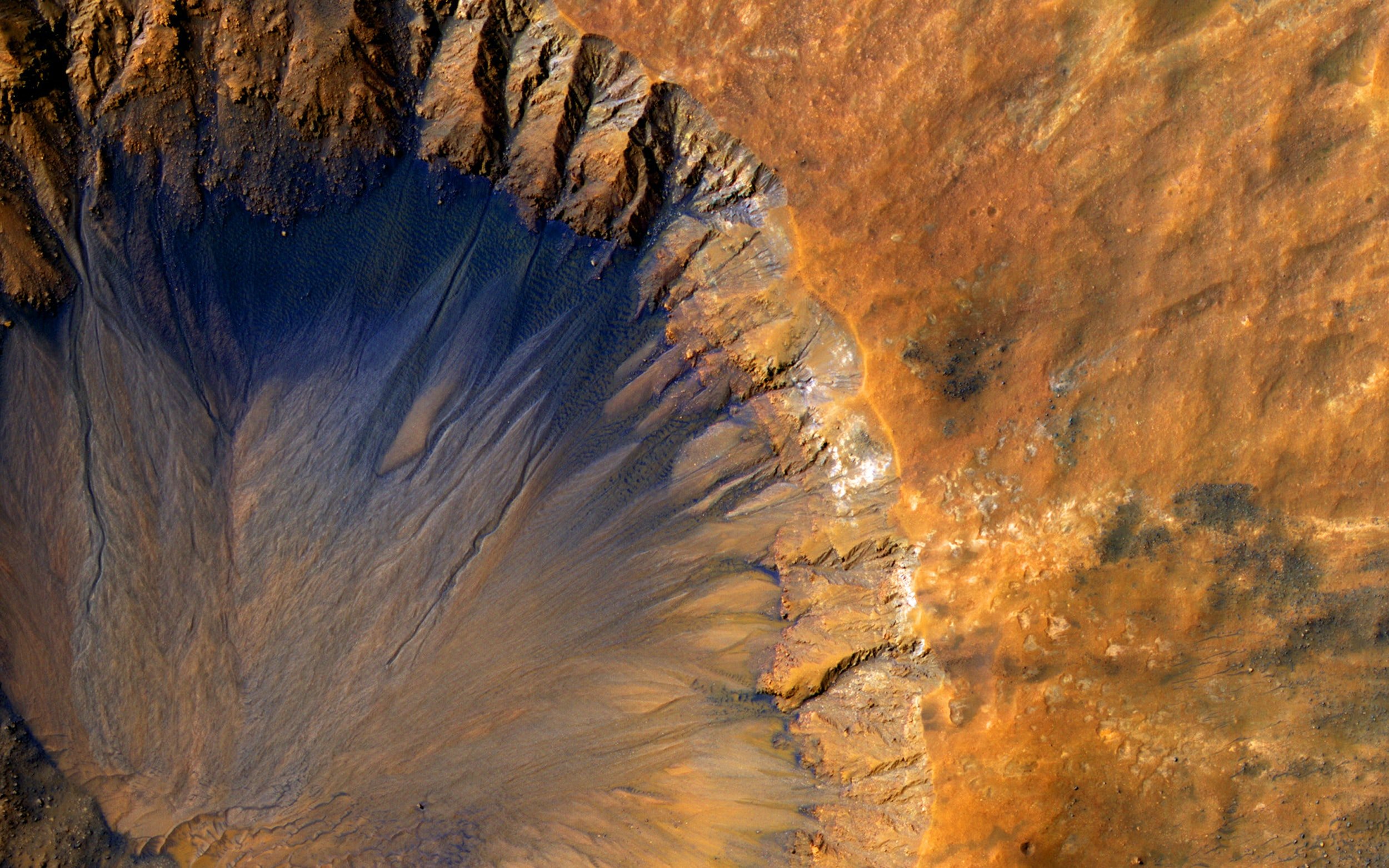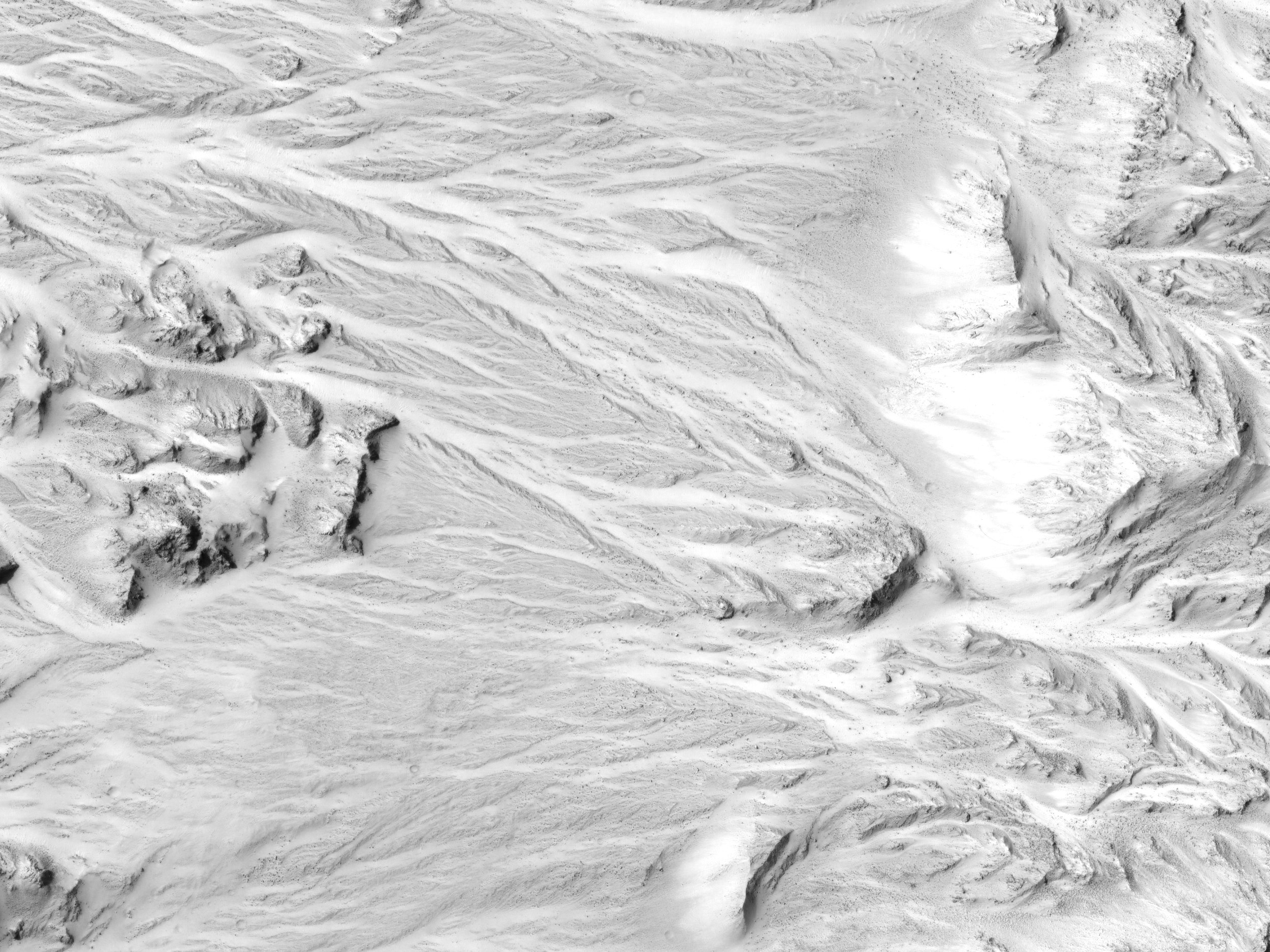
Surface Processes and Thermophysical Investigations

A primary focus of my work is leveraging Thermal Infrared (TIR) image data alongside thermophysical modeling to analyze and understand surface processes. TIR image data offer a valuable opportunity to study the composition and physical attributes of planetary surfaces, often achieving resolutions comparable to in-situ investigations. Moreover, by utilizing the maneuverability of spacecraft like Mars Odyssey to observe surfaces from off-nadir angles, we gain a powerful tool for characterizing various surface features. This approach enables us to delve into processes such as regolith formation, the distribution of cement and ice, the abundance and distribution of difference grain sizes, and surface roughness with unprecedented detail.
Quantifying lava flow roughness and heterogeneity
Understanding the Martian surface requires innovative methods and creative use of orbital data, especially since much of the planet's younger terrain is inaccessible to landers or rovers. With extensive volcanic plains dominated by extrusive volcanism, Mars’ surface tells a story of dynamic processes, from magmatic activity to cratering and eolian reshaping. Yet, the layers of dust accumulated over millions of years often obscure key features, posing significant challenges for scientists.
Our study focuses on the igneous terrains spanning Arsia Mons to Daedalia Planum, leveraging a unique off-nadir thermal infrared (TIR) dataset acquired by the Mars Odyssey spacecraft. Previous research in this region hinted at compositional diversity, but heavy dust cover made definitive conclusions elusive. To address this, we introduced a novel methodology combining the KRC thermal model, thermal inertia data, and off-axis TIR observations. This approach allowed us to predict surface temperatures and quantify submeter-scale surface roughness.
Key Results:
Brightness Temperature (ΔBT) and Roughness:
Surfaces with larger ΔBT values (positive or negative) indicate rougher terrain, while ΔBT values near zero suggest smoother surfaces.
At higher emission angles (e.g., −25° off-nadir), sub-pixel shadowing effects are amplified, leading to greater deviations between measured and modeled temperatures.
Model analysis revealed a positive slope in density plots, indicating the model underpredicts temperatures at lower values (negative ΔBT) and overpredicts them at higher values (positive ΔBT).
Lava Flow Morphology:
Central lava channels exhibit higher surface temperatures and lower ΔBT values due to smoother morphology, while rougher lateral levees and flow breakouts show higher ΔBT values.
Younger flows appear magenta in ΔBT imagery, correlating with rougher surfaces and less dust coverage, whereas older flows are smoother and more dust-mantled.
This research demonstrates the power of innovative observation strategies in extended mission phases to unlock new insights into planetary processes. By combining orbital surface temperature measurements, multi-angular observations, and robust thermophysical modeling, we’ve laid the groundwork for a more nuanced analysis of planetary surfaces. These findings advance our understanding of Martian volcanology and provide a framework for future studies using THEMIS ROTO data, enhancing interpretations of Mars’ dynamic volcanic terrains.
Read the full article here: Brightness Temperature Variations and Anisothermality of Lava Flows near Arsia Mons
To read more about my work:
The Sub-Meter Surface Roughness of Martian Basaltic Lava Flows

